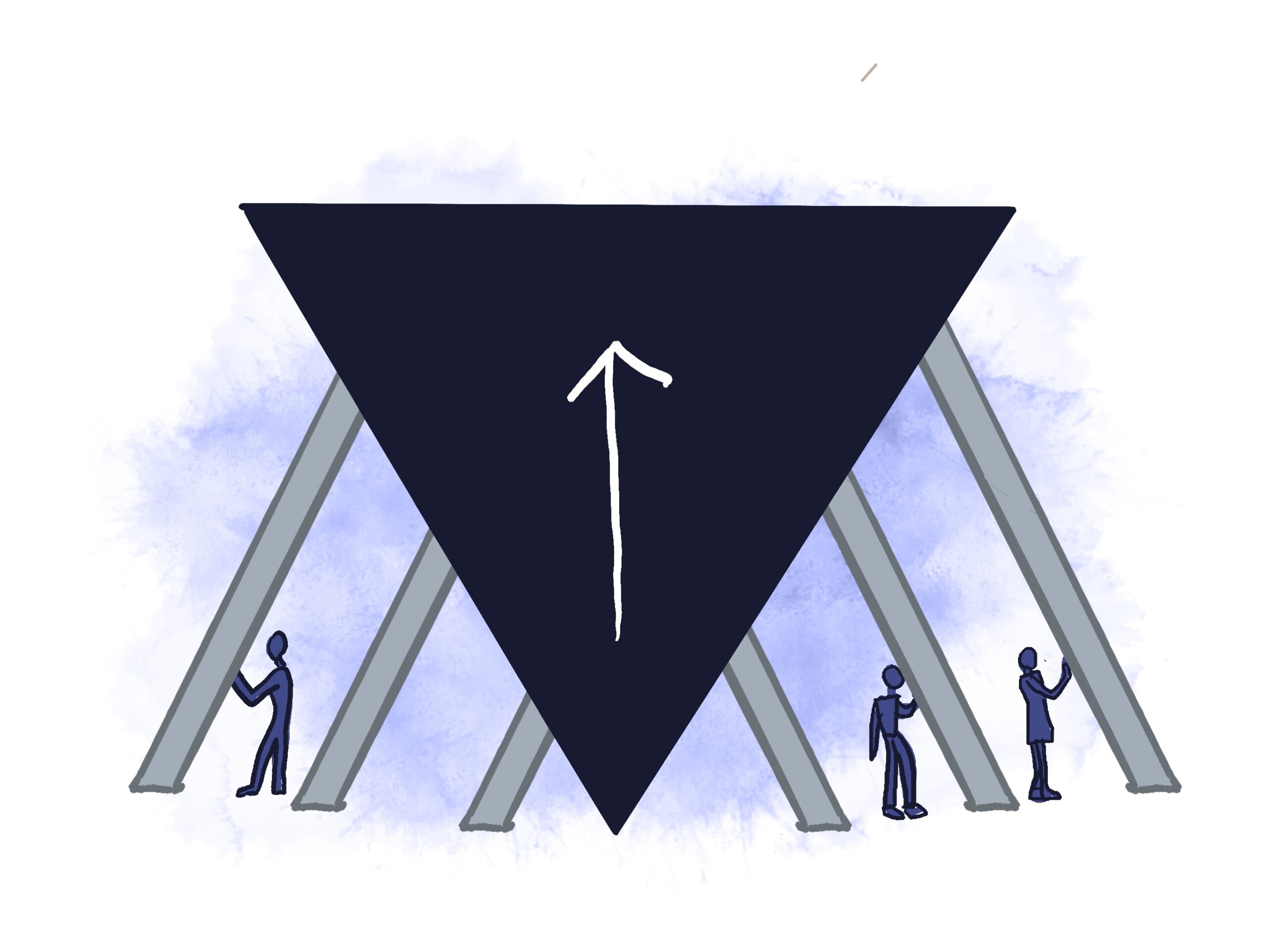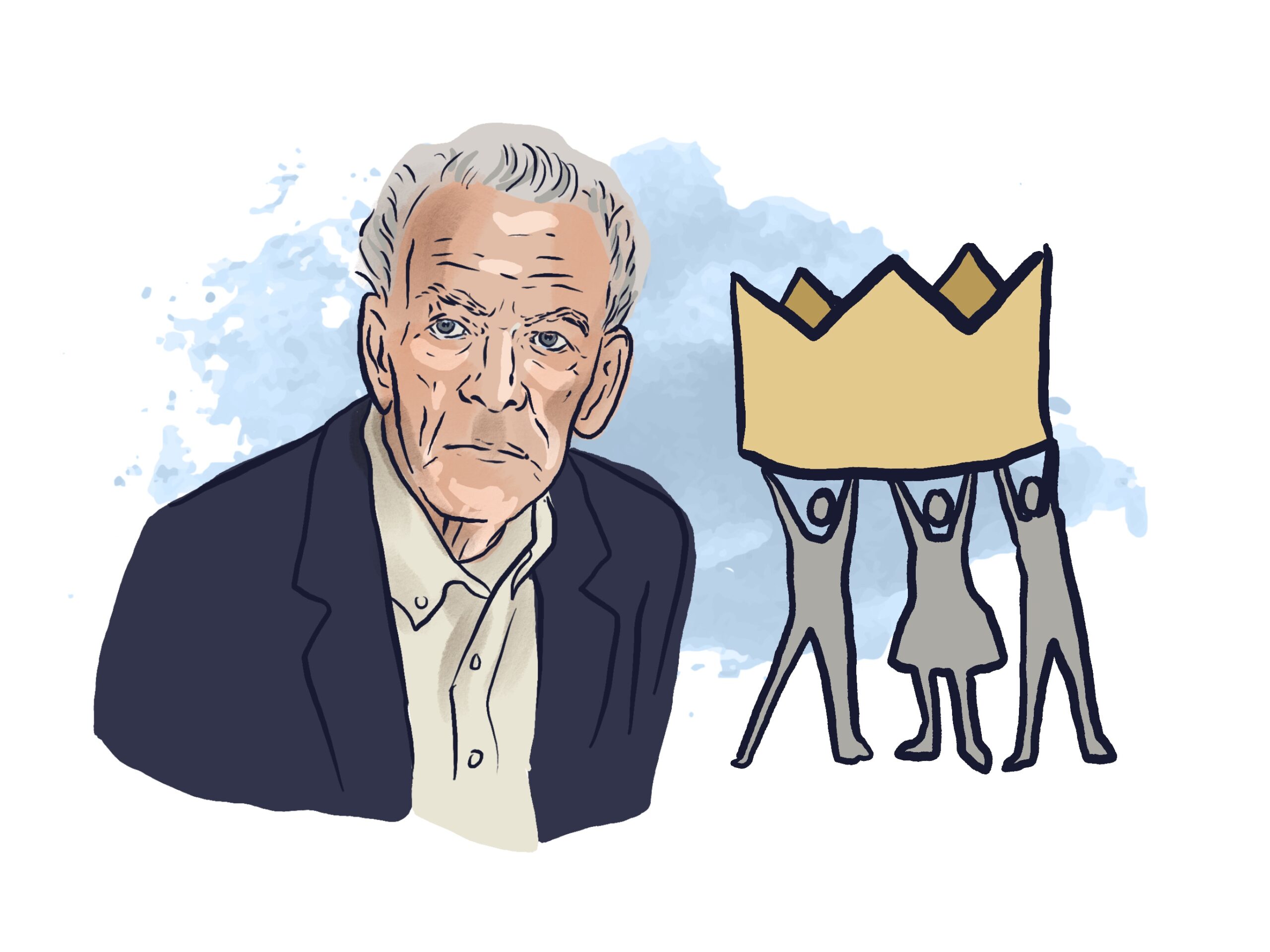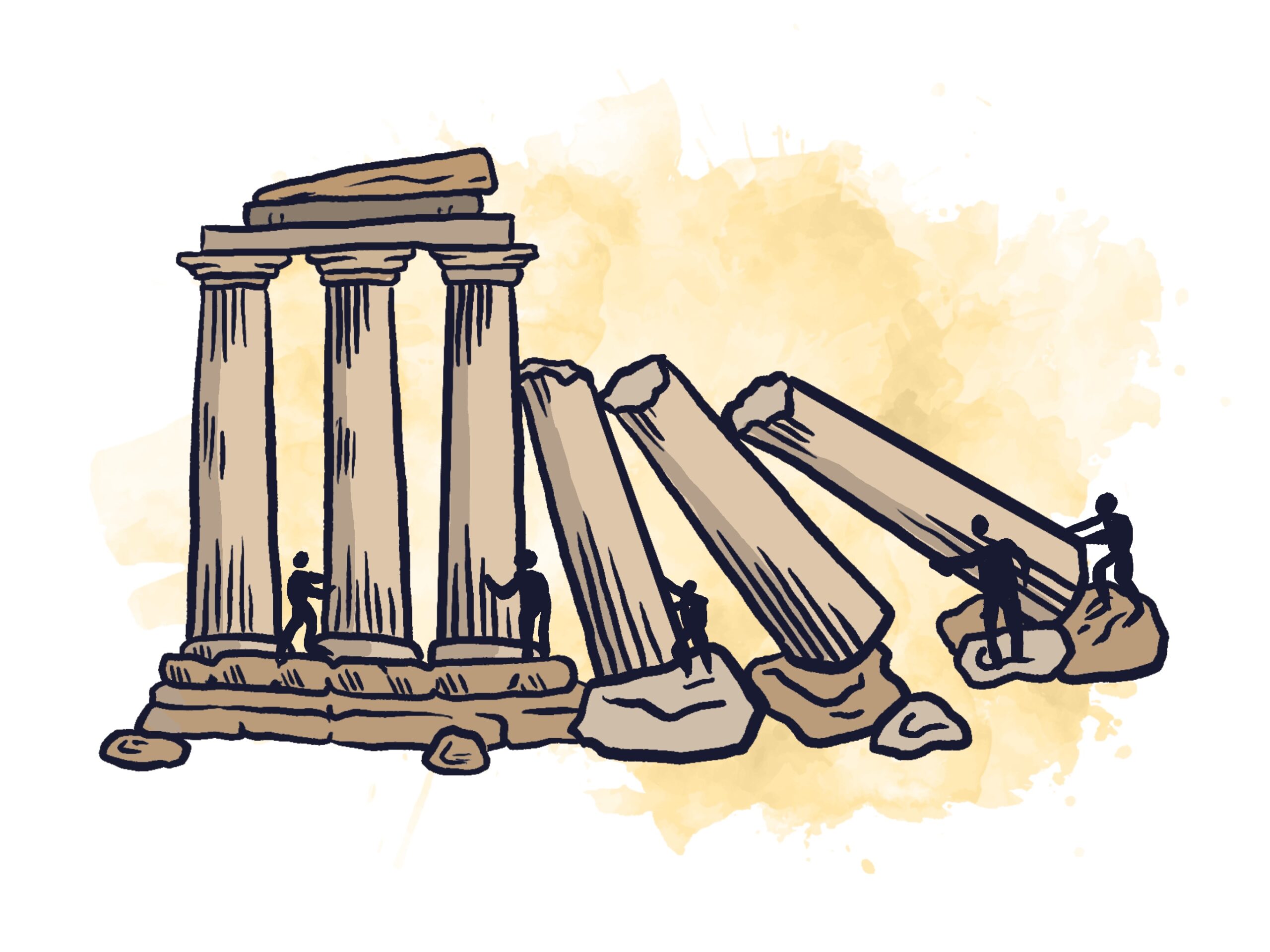You attend a training on civil resistance. “Most of us think that power flows downward from the president down to us low on the totem pole. But we need to think of power as flowing upward by our consent. If teachers don’t teach, schools don’t run. If people don’t repair the roads, they become unusable. We describe this as the upside-down triangle model. Unjust authority on its own is naturally unstable and needs pillars of support to keep it upright — workers to keep the system chugging along so the powerful can keep their status.”


The speaker goes on to quote Gene Sharp: “By themselves, rulers cannot collect taxes, enforce repressive laws and regulations, keep trains running on time, prepare national budgets, direct traffic, manage ports, print money, repair roads, keep markets supplied with food, make steel, build rockets, train the police and army, issue postage stamps or even milk a cow. People provide these services to the ruler through a variety of organizations and institutions. If people would stop providing these skills, the ruler could not rule.”
Targeting pillars of support is a far more effective way of confronting authority than just marching in the street. “When you can remove a few pillars propping him up, just like Humpty Dumpty, he’ll fall.” That’s how people power has been able to throw out dictators in the past.

